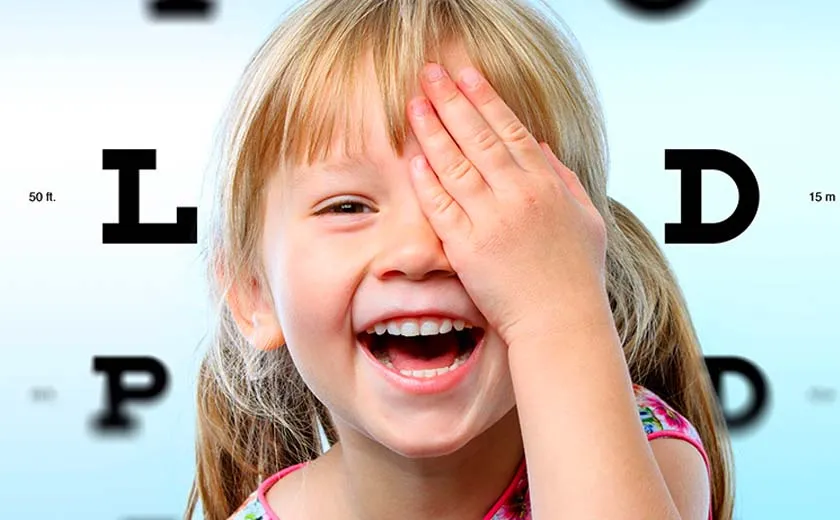Eye Health and Diseases Specialist Prof. Dr. Tayfun Bavbek stated, “There is an easy way to test congenital cataracts. You can take a photo of your child and check their eye pupils. If there is no red reflection in one or both eyes, this condition may be a sign of congenital cataracts, congenital eye tumors, or retinoblastoma.”
Bavbek provided information on common eye diseases in children on the occasion of April 23rd National Sovereignty and Children’s Day.
Bavbek emphasized the importance of bringing every baby for a follow-up eye examination around the age of 1 year after the initial eye examination conducted in the first month after birth. He noted that parents should be more aware of congenital eye diseases.
Bavbek summarized the most common eye disorders encountered in newborns as congenital cataracts, eye pressure, retinoblastoma, tear duct blockage, and premature retinopathy.
İçerik Tablosu
Parents can analyze the symptoms of congenital cataracts.
Bavbek stated that one of the possible eye problems that infants can encounter within the first few months after birth is “congenital” (congenital cataract). He mentioned that if not diagnosed early, this condition can lead to serious amblyopia (lazy eye), and the only treatment in later stages is surgery.
Bavbek provided an important clue to parents for discovering the symptoms of congenital cataracts, stating, “There is an easy way to test for congenital cataracts. You can take a photo of your child and check their eye pupils. If there is no red reflection in one eye or both eyes, this could be a sign of congenital cataracts, congenital eye tumors, or retinoblastoma. At this point, it is crucial for parents to be vigilant and have their children’s eye health checked regularly for early diagnosis.”
Prof. Dr. Tayfun Bavbek also mentioned another congenital disease, glaucoma, and at this point, he warned, “If your child is excessively sensitive to light, experiences excessive tearing in the eyes, or has enlargement of the eyeball, it is advisable to be cautious and consult an eye doctor.”



Tear duct blockage can be opened with massage and eye drops
Bavbek stated that the blockage of the tear duct is among congenital eye disorders, and in some babies, excessive crusting and tearing can occur due to blockage in the tear duct.
Bavbek, stating that this condition can be treated up to 90% with massage and drops until the baby is 9 or 10 months old, mentioned that if the tear duct is still not open at 10 or 11 months, doctors prefer to open it with a probe.
Bavbek stressed the necessity of examining premature babies born weighing less than 500 grams for a condition known as premature retinopathy during the fourth week after birth. He continued, “Due to the underdevelopment of blood vessels in the retina in premature babies, exposure to external oxygen upon leaving the mother’s womb can lead to various pathological issues. Failure to diagnose this condition early can result in dangerous consequences, including vision loss in the future.”
The age limit for the treatment of lazy eye is 7
Prof. Dr. Tayfun Bavbek stated that through regular eye check-ups, conditions such as strabismus (crossed eyes) and differences in prescription between the two eyes can be detected in infants before the age of 1. He emphasized the prompt initiation of treatment, saying, “Strabismus and differences in prescription between the two eyes are the two most common reasons for lazy eye, a condition frequently encountered in our society. Strabismus, if not treatable with proper glasses, may require surgery as a secondary option. If your child has an eye misalignment, the nerves in the visual center cannot develop properly due to the inability to focus accurately, paving the way for lazy eye. Similarly, if there is a difference in prescription between the two eyes, the use of glasses is recommended for treatment. It is also important to monitor whether the prescription is progressing.”
Bavbek warned that if this process is neglected, lazy eye can reach a serious level. He continued, “In the case of lazy eye, treatment is possible until the age of 7 at most. If timely treatment is not provided, this condition becomes permanent for a lifetime. The most important responsibility for parents to prevent lazy eye from becoming permanent is to take their children for an eye check-up once a year until they reach the age of 7.”
The greatest danger in household accidents is sharp objects
Bavbek noted that particularly in preschool children, household accidents often involve issues such as sharp objects like knives, needles, pens, and scissors coming into contact with the eyes.
Bavbek, pointing out that children’s interest in laser pointers can lead to permanent eye problems, commented, “We had a young patient who, out of curiosity, pointed a laser pointer into his eye for just one minute, resulting in a burn in the visual center. Parents must take precautions against potential accidents that can occur at home.”

Create an Online Appointment
You can easily create an appointment by filling out the appointment form below or by clicking here to contact us via Whatsapp.